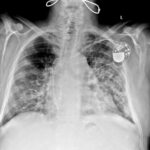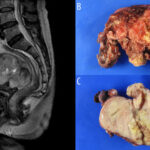Legionnaires’ disease is a severe form of pneumonia caused by the bacterium Legionella pneumophila. It spreads through inhalation of contaminated water droplets from sources such as cooling towers, plumbing systems, and hot tubs. This disease poses a significant health risk, particularly to older adults, smokers, and individuals with weakened immune systems.

Causes and Transmission of Legionnaires’ Disease
The primary cause of Legionnaires’ disease is infection with Legionella pneumophila, which thrives in warm, stagnant water. The bacteria spread when contaminated water droplets become aerosolized and inhaled.
Common Sources of Contamination
- Cooling towers in HVAC systems
- Hot tubs and spas with insufficient chlorine levels
- Plumbing systems in hospitals, hotels, and large buildings
- Fountains and decorative water features
- Water storage tanks and heaters
Symptoms of Legionnaires’ Disease
Legionnaires’ disease symptoms typically appear 2-10 days after exposure. Early symptoms resemble the flu but progress rapidly.
Early Symptoms:
- Fever above 102°F (38.9°C)
- Chills
- Headaches
- Muscle aches
Severe Symptoms:
- Persistent cough (sometimes with mucus or blood)
- Shortness of breath
- Chest pain
- Nausea, vomiting, or diarrhea
- Confusion or cognitive issues
Who is at Risk?
Certain individuals are at a higher risk of contracting Legionnaires’ disease:
- Elderly individuals (over 50 years old)
- Smokers and those with chronic lung diseases
- People with weakened immune systems (e.g., cancer patients, transplant recipients)
- Individuals with underlying conditions like diabetes or kidney disease
Diagnosis and Testing
Doctors diagnose Legionnaires’ disease through several laboratory tests:
- Urinary Antigen Test (UAT): The most common and rapid test
- Sputum Culture: Identifies Legionella bacteria in respiratory secretions
- Blood Tests: Measures immune response
- Chest X-rays: Confirms pneumonia presence
Legionnaires’ Disease Treatment
Treatment typically involves antibiotics, as Legionella bacteria do not respond to common over-the-counter medications.
Commonly Prescribed Antibiotics:
- Levofloxacin
- Azithromycin
- Doxycycline
Most patients recover with appropriate antibiotic therapy, though hospitalization may be required for severe cases.
Preventing Legionnaires’ Disease
Prevention involves proper maintenance of water systems to inhibit bacterial growth.
Effective Prevention Strategies:
- Regularly clean and disinfect cooling towers
- Maintain proper water temperatures (hot water >140°F, cold water <68°F)
- Flush unused water systems periodically
- Use biocides to control bacterial growth
- Monitor and treat hot tubs, fountains, and humidifiers
Outbreaks and Public Health Measures
Public health officials monitor and investigate Legionnaires’ disease outbreaks to prevent widespread infection. Outbreaks often occur in large buildings, hotels, and healthcare facilities due to complex plumbing systems.
Notable Legionnaires’ Disease Outbreaks:
- Philadelphia, 1976: The first known outbreak at an American Legion convention
- New York City, 2015: Over 120 cases linked to cooling towers
- Flint, Michigan, 2014-2015: Tied to water supply contamination
Legionnaires’ disease is a serious but preventable illness caused by Legionella pneumophila. Understanding its causes, symptoms, and prevention strategies is crucial to reducing the risk of infection. Regular maintenance of water systems, prompt diagnosis, and effective treatment play a vital role in managing and controlling this disease.

